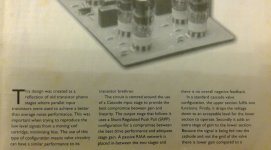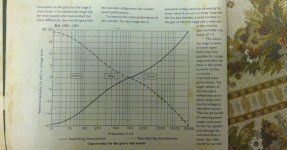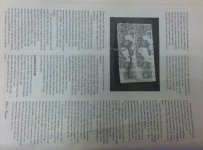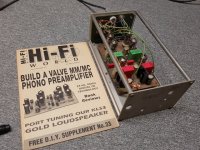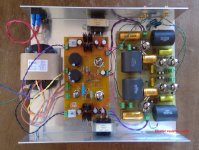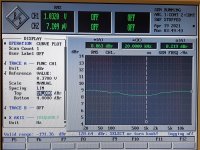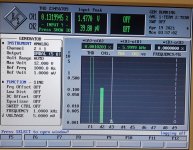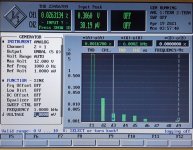I recommend a test for pinpointing the source of hum:
1. disconnect B+ only (pay attention to safety!), keep heating on
2. disconnect heating, keep B+ on
3. short R1
In which case did the hum disappear?
1. disconnect B+ only (pay attention to safety!), keep heating on
2. disconnect heating, keep B+ on
3. short R1
In which case did the hum disappear?
Without examining the "DC" one cannot say "he hum is not coming from that source."Because the filament supply is DC, the hum is not coming from that source.
Can you disconnect one ECC88 at the input without much trouble?
O.K. I must have mixed up two threads here concerning that MM stylus. Sorry, but still it is interesting to do the job with only one ECC88 in front.
Same goes for B+, measure to be sure that both these are clean.
Then one should examine earth-loops and transformer placement and connections.
In relation to what I recommended, also please refer to this:
Phono preamplifier acceptable S/N ratio
Phono preamplifier acceptable S/N ratio
Without examining the "DC" one cannot say "he hum is not coming from that source."
Same goes for B+, measure to be sure that both these are clean.
Then one should examine earth-loops and transformer placement and connections.
Correct! But I find it unlikely to see that as as the source.
But yes, to be absolutely certain : examine.
DC supply, To220 is 1.5A 3 pin regulator
What is the input voltage under load before the regulator ?
Kind regards , Alexander .
Yes music carries on till HT dies
But hum stops immediately?
YOS,
Chris
Here is the text relating to the circuit, i haven't had a chance to try any suggestions to remove the hum yet - I will have a go tomorrow and I will also post a picture of the unit if I still can't get rid of it. Thanks for all your replies
Attachments
Is it perhaps possible for you to take a picture of that (hardware) layout? So we can also benefit from your experiences. 🙂
Heater earthing
Picture as requested, I have put text where I added an earthing resistor to the heater supply. I still need to tidy the wiring and change the input / output cables for screened type but it's all coming together nicely !!
Is it perhaps possible for you to take a picture of that (hardware) layout? So we can also benefit from your experiences. 🙂
Picture as requested, I have put text where I added an earthing resistor to the heater supply. I still need to tidy the wiring and change the input / output cables for screened type but it's all coming together nicely !!
Attachments
Unshielded long input wires for 500uV input????Picture as requested
The output wires also?
Sorry, but it's a typical bad layout, source of hum.
If you would rotate phono board 90 degree left, the input wires would be as short as possible (in this constructions).
In this case is impossible, try shielded (two wire with shield) signal wires.
Wiring
As I said in the text I need to sort the wiring , and regarding the input length there is 1M from the turntable so I can’t see 4 inches making much difference and there is a 100R resistor to ground also ( cartridge load resistor ) on the input !!
As I said in the text I need to sort the wiring , and regarding the input length there is 1M from the turntable so I can’t see 4 inches making much difference and there is a 100R resistor to ground also ( cartridge load resistor ) on the input !!
Hello ,
if I find my PCB , I will do some measurements 😀 .
Kind regards , Alexander .
Alexander, can you share the contents of that article (booklet?) with us please? Or where can I find this on the internet (perhaps)?
Joe.
"input length there is 1M from the turntable so I can’t see 4 inches making much difference"
Phono cable from turntable to phono preamp is shielded.
You wiring inside the phono amp not, and there are some magnetic field from transformers.
If shorting inputs no significant hum, you are a lucky man, but in general the phono input wires must be as short as possible, if it not feasible, must be shielding!
Phono cable from turntable to phono preamp is shielded.
You wiring inside the phono amp not, and there are some magnetic field from transformers.
If shorting inputs no significant hum, you are a lucky man, but in general the phono input wires must be as short as possible, if it not feasible, must be shielding!
- Home
- Amplifiers
- Tubes / Valves
- RIAA using ECC88 tubes
